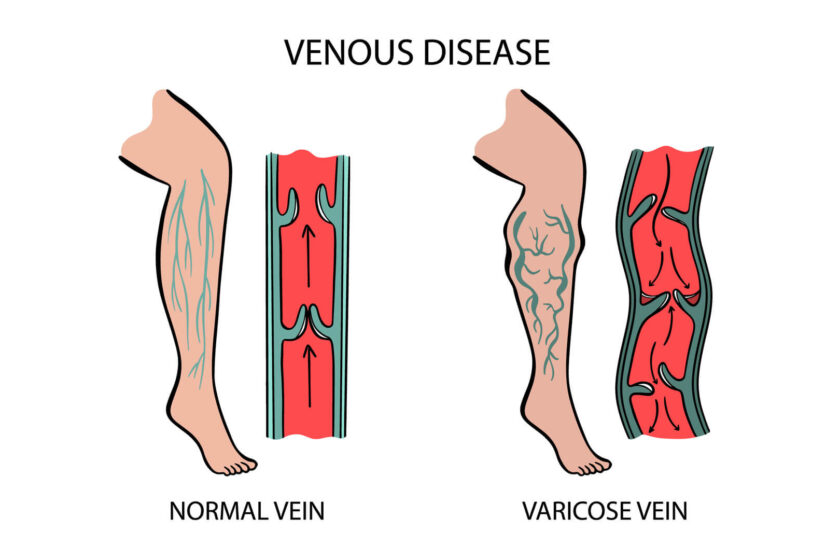
How VenaSeal Works: A Groundbreaking Solution for Varicose Veins
Varicose veins can be more than a cosmetic concern, sometimes leading to discomfort and self-consciousness. The VenaSeal treatment, offering a straightforward, minimally invasive procedure for treating such veins, has emerged as a beacon of hope for many. This innovative treatment, sometimes referred to as glue therapy for varicose veins, presents numerous advantages.
How VenaSeal Works
VenaSeal, as the glue varicose veins treatment, employs a medical adhesive to seal the troublesome veins. Unlike other treatments, it demands no thermal application and is non-sclerosant, positioning it as a unique method approved across various regions, including the United States. The immediate closure of veins and the absence of post-procedure compression stocking requirements distinguish this from other methods, creating an efficient and patient-friendly alternative.
VenaSeal Advantages – Benefits of the VenaSeal Procedure
Varicose veins, with their unsightly and often painful nature, have ushered in a demand for innovative treatments. VenaSeal, heralded for its unique approach, stands out in numerous ways:
No Painful Recovery
This method eliminates the need for heat which is required in Laser or Radiofrequency ablation. Thus, patients often report minimal pain during and after the procedure.
Rapid Return to Daily Activities
VenaSeal allows individuals to swiftly resume their regular activities, given its non-surgical, non-invasive nature. This is particularly beneficial for active individuals or those with demanding careers.
Aesthetic Benefits
The procedure doesn’t require any cuts or stitches, and hence offers superior aesthetic benefits as compared to surgery.
Dual-Benefit Treatment
It addresses not just the physical but also the visual aspects of varicose veins, ensuring that the treated veins fade over time, and enhancing the cosmetic appeal of the legs.
Disadvantages of Venaseal
Cost
As compared to other treatments options, the cost of venaseal is higher
Need for adjuvant treatment
Venaseal alone is useful to treat the main refluxing vein in thigh or leg, but other side branches will need additional treatment like sclerotherapy or hook phlebectomy.
Allergic reaction
Glue, being a chemical can have a possibility of reaction ( about 1 to 2 out of 100 patients). In this, patients may develop redness or skin itching and sometimes even skin ulcers. It is not possible to predict the possibility of glue allergy in anyone before the procedure.
Renew Your Legs with VenaSeal.
When considering varicose veins, it’s not just about physical health but also about confidence and comfort. VenaSeal, by sealing affected veins, not only alleviates physical symptoms but also encourages people to flaunt their legs without hesitation or self-consciousness.
Walking with Confidence
No longer do individuals have to conceal their legs under long garments; post-VenaSeal, the rejuvenated appearance of their legs allows them to wear what they wish without apprehension.
Freedom from Discomfort
By addressing the root cause of varicose veins, VenaSeal enables a return to activities like walking, running, or standing for prolonged periods without discomfort.
About VenaSeal Varicose Vein Treatment Specialist – Dr Sumit Kapadia
Dr. Sumit Kapadia, a renowned specialist in varicose vein treatments, has extensively worked with VenaSeal, ensuring patient safety and optimal results. His expertise in executing the VenaSeal procedure minimizes potential risks, thereby enhancing the probability of a successful outcome.
The VenaSeal Procedure: A Detailed Exploration
Step 1: Evaluation and Mapping
The specialist conducts a thorough examination and utilizes ultrasound to map the veins requiring treatment.
Step 2: Local Anesthetic
To ensure comfort, a local anaesthetic is administered at the treatment site to numb the area.
Step 3: Catheter Insertion
A small catheter is gently guided into the vein under ultrasound guidance.
Step 4: VenaSeal Deployment
The medical adhesive (glue) is administered through the catheter, effectively sealing the malfunctioning vein.
Step 5: Immediate Mobilisation
Patients can often stand and walk around immediately post-procedure, illustrating the minimal downtime involved.
Pre-, During-, and Post-Procedure Expectations in Detail
Pre-Procedure:
Consultation: Detailed discussions with the specialist to understand the procedure, costs, and expected outcomes.
Preparation: Generally minimal; patients may be advised to wear loose clothing and avoid certain medications.
During the Procedure:
Comfort Ensured: Local anesthesia minimizes discomfort.
Duration: Typically, VenaSeal takes about 30–60 minutes.
Patient Awareness: Patients remain awake, and the procedure is often described as painless or only mildly uncomfortable.
Post-Procedure:
Rapid Mobilization: Encouraged to walk and resume activities.
Check-Ups: Follow-ups are scheduled to ensure successful closure of the vein.
Gradual Improvement: Aesthetic and symptomatic improvements continue over the subsequent weeks and months.
Patient Results: Before and After
Numerous cases document a significant improvement in both the aesthetic appearance and symptomatic relief of varicose veins post-VenaSeal, validating its efficacy and patient satisfaction levels.
Benefits: Beyond the Procedure
VenaSeal doesn’t just stop at treating the vein; its repercussions are far-reaching.
Enhanced Physical Activity
With pain and swelling minimized, individuals often find themselves able to engage in physical activities more freely .
Elevated Mental Well-being
By reducing physical discomfort and enhancing the aesthetic of the legs, the psychological benefit of improved self-esteem and body image cannot be underestimated.
Skin Health
Over time, untreated varicose veins can lead to skin changes and ulcers. VenaSeal, by addressing the problematic veins, can mitigate these issues before they progress.
Conclusion
Navigating through the plethora of varicose vein treatments, VenaSeal emerges as a compelling option, merging simplicity with efficacy. Whether considering the VenaSeal treatment cost, the minimally invasive nature of the procedure, or its rapid recovery time, it stands out as a viable option for many.
However, it’s essential to consult a specialist like Dr Sumit Kapadia to understand whether VenaSeal is the best fit for your specific case, given the varied options available.
VenaSeal Procedure FAQ
Is VenaSeal the Best Treatment for Varicose Veins?
VenaSeal ranks highly due to its minimal invasiveness and quick recovery. However, ‘best’ is subjective and depends on individual cases. We also use other minimally invasive methods including Laser and sclerotherapy on a regular basis with good results.
What Is the Disadvantage of VenaSeal?
One notable disadvantage may be that the cost of VenaSeal treatment is not always covered by insurance. Also, as compared to other treatments, the cost would be higher with Venaseal.
How Long Does It Take for Varicose Veins to Disappear After VenaSeal?
Improvements are often noticed immediately, with progressive enhancement over weeks to months.
What Precautions Should Be Taken After VenaSeal Surgery?
General advice includes avoiding strenuous activities for a short period and following all specialist advice.
How Long Does It Take for VenaSeal to Heal?
Recovery time is notably short, with many returning to daily activities the same day.
Can VenaSeal Cause Nerve Damage?
While exceedingly rare, always discuss potential risks with your specialist.

MBBS, MS, MRCS, DNB-Fellow
Dr. Sumit Kapadia
Dr. Sumit Kapadia / MR KAPADIA SUMIT a gold-medalist from Baroda Medical College, obtained his general surgical training and senior residency from SSG Hospital, Vadodara.

MBBS, MS, MRCS, DNB-Fellow
Dr. Sumit Kapadia
Dr. Sumit Kapadia / MR KAPADIA SUMIT a gold-medalist from Baroda Medical College, obtained his general surgical training and senior residency from SSG Hospital, Vadodara.



